December 14, 2012 — The last men to walk on the moon blasted off its surface for a final time 40 years ago today.
After three days exploring the Taurus-Littrow lunar valley, Apollo 17 astronauts Eugene Cernan and Harrison Schmitt lit the engine on the upper (ascent) stage of their lunar module "Challenger" and launched off the surface at 5:55 p.m. EST (2255 GMT) on Dec. 14, 1972.
The last word spoken by a man on the moon (to date) — "Ignition" — was voiced by Schmitt, the first geologist and professional scientist to fly on a NASA mission. Cernan, as Apollo 17 commander, delivered the order to leave — "Let's get off" — just moments before.
(In the four decades since he left the moon, Cernan came to believe his remark was something slightly longer and a whole lot more colorful, "Let's get this mother out of here," although the transcripts and audio recordings disagree.)
Footage of that last lunar liftoff was broadcast live back to Earth via a color television camera mounted on the lunar roving vehicle, or lunar rover, which the astronauts parked on the moon a short distance from their landing site. The video, which was timed and directed by Mission Control from a quarter of a million miles away on Earth, captured the small spacecraft as it soared away into the blackness of space.
And so ended humankind's first "small steps" on another celestial body.
The Apollo 17 mission crowned six lunar landings for the United States and brought back the final 244 pounds (111 kilograms) of lunar material (including 741 individual moon rock and soil samples and a deep drill core with material from 3 meters below the lunar surface) out of the total 842 pounds (382 kilograms) collected by the astronauts who walked on the moon.
Notably, among the Apollo 17 lunar samples was a small but unique cache of orange soil, which was confirmed later as microscopic glass beads and fragments formed during volcanic activity on the moon.
Return to Earth
"As the Challenger leaves the surface of the moon, we are conscious not of what we leave behind, but of what lies before us," read the statement from the White House, as was radioed by Mission Control in Houston to the Apollo 17 astronauts. "This may be the last time in this century that men will walk on the moon, but space exploration will continue, the benefits of space exploration will continue, and there will be new dreams to pursue, based upon what we have learned."
"Few events have ever marked so clearly the passage of history from one epoch to another," the statement, which was signed by President Richard Nixon, concluded. "If we understand this about the last flight of Apollo, then truly we shall have touched a 'many splendored thing.'"
The presidential message was radioed soon after the two moonwalkers met up with Ronald Evans, Apollo 17's third member, who had been circling the moon on the command module "America" as Cernan and Schmitt explored below.
The trip back to Earth included a spacewalk by Evans to retrieve exposed film from an exterior equipment bay on the America module. Before leaving lunar orbit, the crew jettisoned Challenger's ascent stage, sending it crashing back into the moon. The resulting impact was recorded by seismometers that were deployed by Cernan and Schmitt while on the surface.
Twelve days and 14 hours after launching for the moon, Cernan, Schmitt and Evans splashed down in the South Pacific Ocean at 2:25 p.m. EST (1925 GMT) on Dec. 19, 1972. The USS Ticonderoga aircraft carrier recovered the command module and the astronauts from the sea.
Return to the moon
For 40 years, Apollo 17 has retained the distinction as the last human voyage to the moon. Schmitt is still the 12th out of only 12 men to step foot on the moon and Cernan, as the last to climb up the ladder into Challenger, is still the final man to leave his footprints on the lunar surface.
Before he took his final step off the moon, Cernan said, "America's challenge of today has forged man's destiny of tomorrow. And, as we leave the moon at Taurus-Littrow, we leave as we came and, God willing, as we shall return, with peace and hope for all mankind."
Momentum is now building to return humans to the moon, both through government and commercial efforts.
Schmitt says that if he had the opportunity today to revisit Taurus-Littrow, he would return to the site where he found the orange soil and then venture to an area where he and Cernan didn't explore.
"I would want to go back to Shorty Crater and spend more time really trying to define the geological context of the orange soil that we found and sampled," the moonwalker told collectSPACE.com in an recent interview.
"The other thing though, would be to go to the area that was northeast of the landing site, an area we called the 'Sculptured Hills' and really try to traverse across those hills and gather as many different kinds of rock samples as we could possibly do," Schmitt said, explaining that the insight gained over the past 40 years now suggests the Hills may be "a very large, relative coherent piece of deep crust" that was thrown from an impact basin.
Ultimately though, Schmitt said he would look beyond his old landing site for the next steps on the surface.
"Given the chance to go back to Taurus Littrow, I would probably argue that there are more important places to go right now, as we do have samples and observations from [there]," Schmitt said. "The thing I'd like to see us sample is the older [impact] basins. We know they are older but we do not know how much older they are." |
|
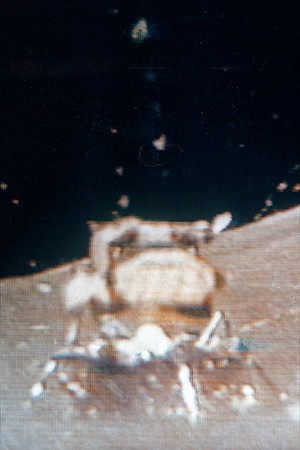
"We're on our way, Houston!" Forty years go, the Apollo 17 lunar module "Challenger" lifted off the moon for the final time. (NASA)
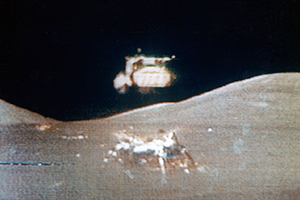
"Let's get off..." Television still from a camera mounted on the Apollo 17 lunar rover and directed from Mission Control. (NASA)
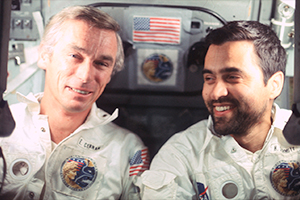
The Apollo 17 command module "America" as viewed from the lunar module "Challenger" while orbiting the moon. (NASA)
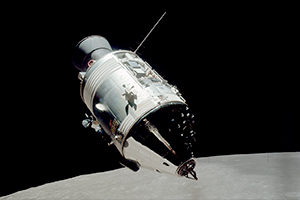
Last men on the moon: Apollo 17 commander Gene Cernan (left) and Harrison Schmitt after leaving the moon behind. (NASA)
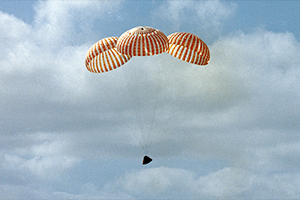
Apollo 17's command module "America" as seen being lowered by parachute to a splashdown on Dec. 19, 1972. (NASA) |
